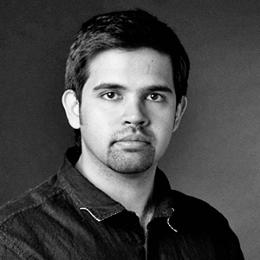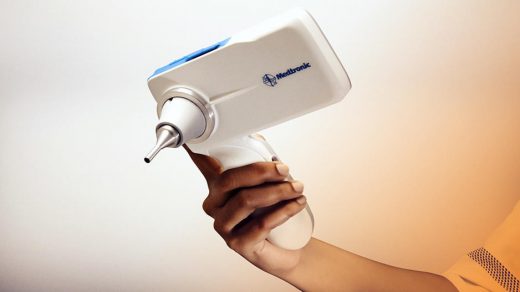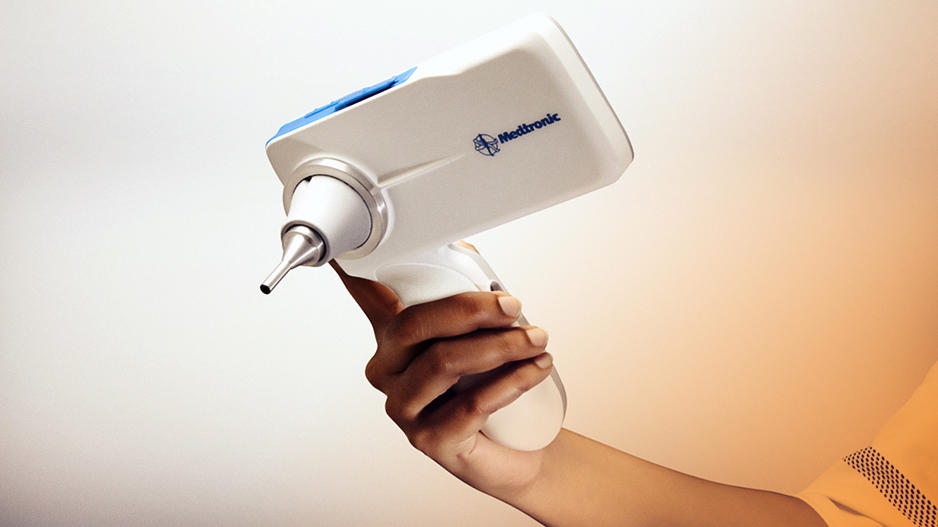This Doctor/Stand-Up Comic’s Life-Saving Devices Are No Laughing Matter
It might be easy for a layperson to regard medicine as a dry, exceedingly intellectual profession practiced by somber brainiacs in white lab coats. And then there’s Jagdish Chaturvedi, a young doctor in India who moonlights as a stand-up comedian, has a side hustle as a medical device inventor, and sees medicine as an endlessly creative profession.
That’s partly because being a physician in his home country comes with abundant constraints. India, he says, can be a place of idiosyncratic patient expectations, where superstitions and religious beliefs (across socioeconomic and educational backgrounds) can influence the choice of doctor and treatment. Chaturvedi says that some people refuse treatment because they are convinced that taking medicine is a bigger gamble than learning to live with a particular ailment. Those who do seek out a physician’s expertise may be among the estimated 80% of Indians who don’t have health insurance and pay for care out-of-pocket. They often shop for affordable cures and treatments, negotiating with doctors on pricing, Chaturvedi says, “just like they would with a vegetable vendor in a farmer’s market.” A 2012 government census reported that 29.8% of the 1.3 billion population of India live below the poverty line. (Because of debate over where the poverty line falls, some estimates put the figure as high as 77%.)

Chaturvedi is only 32, but the Bangalore-based ear, nose, and throat surgeon has already helped invent and launch 18 low-cost medical devices tailored for the singular needs of India’s health care system. “As a doctor in India,” says Chaturvedi, who dedicates about 40% of his clinical practice to underserved rural areas, “I need to deal with the disease, the limited resources, and the cultural and superstitious beliefs. Many times, it’s hard to treat a patient if the doctor doesn’t seem aligned with their beliefs.” Confronting those challenges on a daily basis has forced him to become an uncommonly creative doctor in a traditionally left-brain profession—an ENT specialist who calls himself “the first ENTrepreneur,” one who has made it his mission to dream up new gadgets that offer solutions to otherwise intractable problems.
And in his downtime, he tells jokes.
Chaturvedi performs as a stand-up comedian and an actor on the small stage. And no, he doesn’t do this in service of some cliché notion that laughter is the best . . . Oh, you know the rest.
He does it because he sees humor as a secret weapon that sharpens his creativity and improvisation skills—both essential to his medical work. “Because I am on the constant look-out for stand-up material content, it keeps me very vigilant and helps me exercise my observation skills,” says Chaturvedi, who landed on the MIT Technology Review’s list of 35 Innovators Under 35 in 2016. “You need to be observant to be able to find something that’s funny.”

Chatarvedi came up with the idea for his first device in 2010, when he was in medical school. While studying throat cancer, he noticed that expensive, state-of-the-art endoscopy systems were cumbersome machines outfitted with a TV screen, a light source, and a long cylindrical scope outfitted with a high-resolution camera for capturing images of potentially cancerous tissue. They weren’t portable enough to take out to rural areas. In those less affluent sectors, doctors tended to use crude, often ineffective tools to perform endoscopies. “At that point,” Chatarvedi says, “I wondered if there was a way to make this more affordable and portable so [physicians] didn’t have to rely on outdated mirrors and headlamps for the diagnosis of throat conditions.”
His a-ha moment came when he realized that low tech didn’t have to mean low quality. With a bit of experimenting, he discovered that using a less sophisticated camera could lead to a solid diagnosis, even based on a lower-resolution image. He funneled this discovery into the Entraview, a hand-held, low-cost, ENT multi-endoscope recorder that Chatarvedi estimates has diagnosed a few hundred thousand patients all over India. In 2014, he licensed the Entraview to the medical supply company Medtronic.
In 2013, eager to continue developing devices, Chaturvedi joined the Indian med-tech company InnAccel, where, as director of clinical innovations and partnerships, he has access to engineers and colleagues who share his passion for pushing health care technology forward. His most recent invention is a low-cost balloon device that he’s been taking with him as he travels around India and trains doctors how to use it.
“It’s for people whose sinuses are obstructed because of infection or inflammation,” he says. “We can basically take a balloon catheter inside and open up their sinuses by dilating the balloon.”
Balancing the practice of medicine with the creation of medical gadgetry has given Chaturvedi a unique point of view when it comes to seeing people at his clinic. “I can’t tell if I am seeing the patient as a doctor or an innovator,” he says. “The two have been integrated so positively.”
The key for him in both pursuits is to look past the constraint—for example, a patient’s lack of access to care that involves high-cost equipment—and work backwards from there, using whichever tools are on hand to treat an illness. “I allow the problem to [determine] the solution and the path to bring it to commercialization,” he says. “It’s like seeing the entire picture first before putting together pieces of a puzzle, rather then putting them together one step at a time and then figuring out the picture.”
And when he gets stuck—really stuck—well, it’s like the Bard said: “One man in his time plays many parts.” Especially, perhaps, if you’re a young doctor who enjoys strutting his hour upon the stage.
For Chaturvedi, performing takes the edge off and keeps him on his toes creatively. He’s acted in local plays since childhood (he once played an “unempathetic cardiologist”), and got into stand-up comedy four years ago when his schedule no longer allowed him to commit to month-long rehearsals for theater groups. “Stand-up comedy is a flexible format that depends upon me and me alone,” he says. “I can write material whenever I find time, and I can practice whenever I am free.”
When he explains his brand of comedy to an outsider, it can have a certain kind of nerdy charm—almost like you’re listening to The Big Bang Theory’s Sheldon Cooper talk about having a go at the mic on amateur night.
Like many comedians, he often mines the women-are-from-Venus-men-are-from-Mars debate. One of his go-to bits is on “confusing” things women say in relationships.
“They often end an argument with, ‘Do whatever you want,’ and it confuses me,” he tells me, slipping into performance mode. “Because the whole reason for the argument was because of what I wanted to do. You know when a relationship is going downhill when a woman asks, ‘How could you do this to me?’ There is no possible way to answer this question correctly. Any answer will only lead to more problems. One day I waited for my wife to make a mistake to ask her the same question, and I did. She said . . . ‘How could you say this to me?’” (His YouTube series, The Magaa of Small Things, is a pun on the title of a popular book, The God of Small Things.)
For Chaturvedi, there’s a very human benefit to doing stand-up. Facing a room full of strangers and trying to tease a laugh out of them, he says, has made him a more approachable and likable doctor. It’s even taught him how (and when) to keep interactions with patients lighthearted.
And it’s all thanks to that magical ingredient.
“I think creativity is quite intrinsic when it comes to the application of medicine,” he says. “The basic knowledge tools may be scientific and factual. [But] every patient is different and often requires a customized approach. We need to be alert, think creatively, and figure out the most effective way to cure the patient.”
Fast Company , Read Full Story
(58)



